We’ve featured a lot of survival tips over the years that can help you get out of trouble, but what if you’re next to someone else who’s having a medical emergency? Don’t just stand there as the person chokes or faints! Know what to do in these life-or-death situations.
Before we start, the very first thing you should do is call for emergency help (or if someone else is around make sure they call 000). Then, while you’re waiting, see what you can do to help the person. Also, make your safety a priority. As flight attendants emphasise before takeoff, when the oxygen mask comes down, you have to secure yours first — otherwise you’re of no use to anyone else.
With these things in mind, you don’t need to be a paramedic or other health pro to possibly save someone’s life one day. Here are a few things to know.
How to Perform CPR
When you think “life-saving skills”, the first thing that probably comes to mind is CPR, the technique that could make all the difference for someone who has collapsed and is under cardiac arrest. It’s always best to take a class, so you know the proper procedures and have practiced them beforehand, but even without official training you could save a life if no one else is around with more CPR experience. Solely watching a one-minute instruction video about CPR could make you a better life-saver.
“Hands-only” CPR can be done for anyone (except newborns) whose heart has stopped beating, according to the American Heart Association/Mayo Clinic. With this technique, also known as “compression-only” CPR, you press down about 5cm deep on the chest at a rate of about 100 times per minute until the paramedics arrive — and skip the giving breath part. According to one medical review examiner, singing the BeeGees’ song “Stayin’ Alive” will help you keep that tempo. (Queen’s “Another One Bites the Dust” is another alternative, but probably not appropriate in this situation).
What to Do If Someone May Be Having a Heart Attack
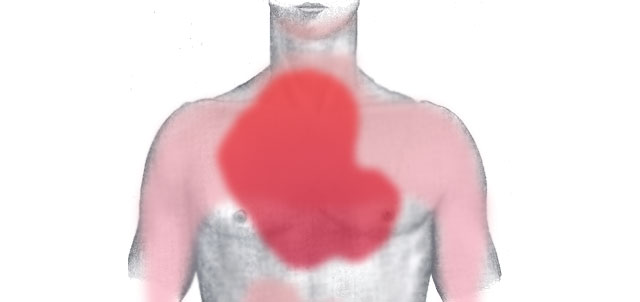
It’s important to know the common signs of heart attacks and what you can do to help a person going through it. Sometimesm the symptoms are obviously cardiac arrest (which would require CPR, above), and at other times they’re not so dramatic and could just seem like heartburn. After calling for help, if the person is over the age of 16 and not allergic to aspirin — and isn’t taking any medications that could interact with it — offer a tablet of aspirin, which the Mayo Clinic says could reduce damage to the heart.
How to Help Someone Who Is Choking
In restaurants everywhere, you see posters illustrating how to do the Heimlich manoeuvre when the person’s airway is blocked by food or another object. Chances are those posters aren’t in your home or out in the street as you go about your everyday life, so this first-aid technique, demonstrated in the video above, is useful to memorise for any environment. Note: before doing the abdominal thrusts, give five blows to the person’s back with the heel of your hand.
There are different techniques for children and infants, whose small tracheas and propensity to swallow random objects put the fear of choking into every parent.
How to Save Someone Who’s Drowning
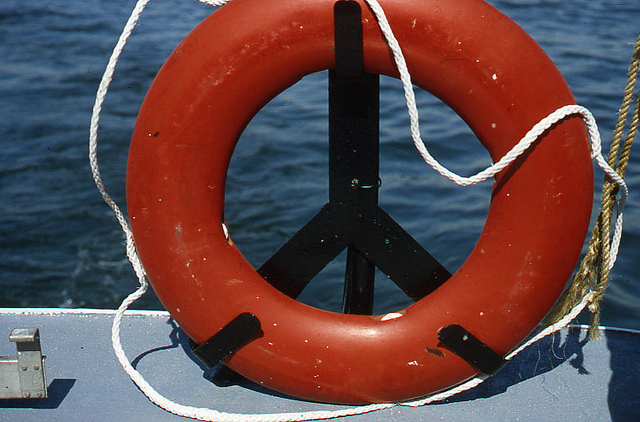
Drowning is one of the most common causes of accidental death, especially among children. If you’re not a skilled swimmer who knows how to swim with a possibly flailing person, the most important thing to know is that swimming out to the person should be the last resort. Family Doctor offers this mnemonic: “Reach, throw, row, go”
- Reach: If the person is near the edge of a pool or dock, lie flat on the ground and try to reach the person. Use a tree branch, oar, towel, or shepherd’s hook to lengthen your reach. If you have to, get in the water and hold onto the pool edge or dock while trying to reach the person
- Throw: Throw a safety ring, if available
- Row: Get a boat (again, if one’s available)
- Go: Swim out as the last resort. Bring a rescue safety ring, towel, or shirt with you so you can tow the person in.
How to Treat Bleeding
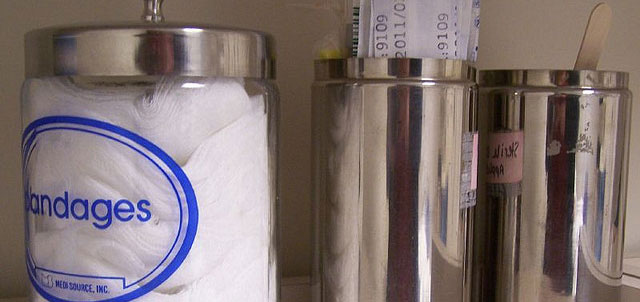
There are different kinds of bleeding, from a minor scrape to the most dangerous type, arterial bleeding. In either case, your goal is to stop the bleeding as soon as possible. According to the Mayo Clinic, after washing your hands and putting on gloves (if available; a clean plastic bag could suffice), you should:
- Have the person lie down and cover him or her with a blanket. Elevate the site of bleeding.
- Remove any obvious dirt or debris from the wound, but leave any large or deeply embedded objects.
- Apply continuous pressure with a clean cloth or bandage for at least 20 minutes without looking to see if the bleeding has stopped.
- Add more gauze if you need to.
- If the bleeding doesn’t stop, apply pressure to the artery: “Pressure points of the arm are on the inside of the arm just above the elbow and just below the armpit. Pressure points of the leg are just behind the knee and in the groin. Squeeze the main artery in these areas against the bone. Keep your fingers flat. With your other hand, continue to exert pressure on the wound itself.”
- Leave the bandages in place and immobilizs the injured body part once the bleeding has stopped.
How to Treat a Burn
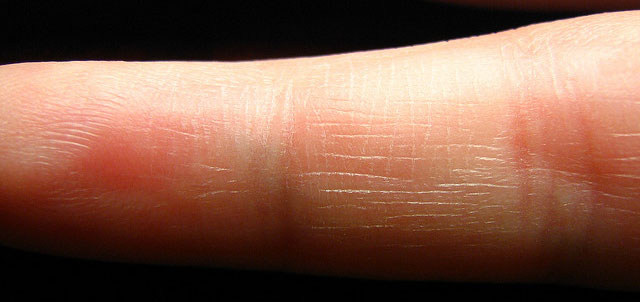
Large or severe burns should be treated by a medical professional, but Dr. Matthew Hoffman offers this advice on WebMD for steps you can take:
Immediately after a burn, run cool tap water over the skin for 10 minutes. Then, cool the skin with a moist compress. Don’t put ice, butter or anything else directly on the burned skin. Clean the skin gently with mild soap and tap water. Take acetaminophen (Tylenol) or ibuprofen (Motrin, [Advil]) for pain. Simple burns involving only the very surface of the skin do not need dressings.
The BBC, however, recommends running cold water for at least 20 minutes, as this can help for up to three hours, and also advises you remove clothing and jewellery. (That butter remedy really is a myth, by the way. Apparently, people would put yoghurt, tomato paste, raw egg whites, sliced potatoes, and even cooking oil on a burn. Butter might be useful if you have hot tar on your skin, but otherwise save those other items for your meals instead.)
How to Deliver Baby in a Car (or Anywhere Else)

The fear of every pregnant woman and her partner: having to deliver the baby without help. This might not be a priority life skill for you if you don’t often find yourself in the company of a pregnant lady, but one of the things about survival skills is you never know when you’re going to need them. So, take this advice from The Worst-Case Scenario Survival Handbook, which says that babies basically deliver themselves (but still could use a little help):
- Time the uterine contractions. You’ll know it’s most likely real rather than false when contractions are about three to five minutes apart and last 40 to 90 seconds, as well as increasing in strength and frequency, for at least an hour. This is for first-time mothers.
- Support the baby’s head and then body as it moves out of the mother’s body
- Dry off the baby and keep it warm. Don’t slap the baby’s bottom, but do clear out any fluid from the baby’s mouth with your fingers if necessary.
- Tie off the umbilical cord several inches from the baby with a piece of string, such as a shoelace
- You don’t have to cut the cord unless you’re hours from the hospital. If that’s the case, safely cut the cord by tying it again a few inches closer to the mother and cutting between the knots.
If you have absolutely no alternative and the baby is starting to emerge feet first (a breech baby), the instructions are the same.
How to Carry Someone Heavier Than You
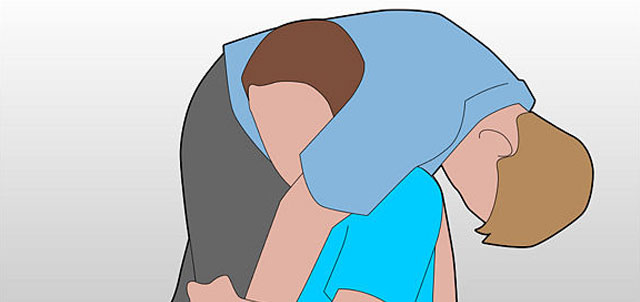
Usually it’s best to leave a person who’s hurt where they are until medical help comes. You should never move a person who might have a head, neck or spinal injury. In other cases, however, you might need to move someone to a safer location. If you’re not very strong or that person is heavier than you, here’s how to lift that person without hurting yourself in the process:
- With the person facing you, take the person’s arm and pull it over your shoulder
- Kneel down or crouch down so the person’s middle is against your shoulder
- Thrust up with your legs and hips to stand. Don’t lean forward or you’ll hurt your back.
- The person will now be hung over your shoulder and you can walk around.
WikiHow offers illustrated steps. It also recommends trying this on small people or children first, which could be awkward or entertaining depending on the guinea pig.
Hopefully you’ll never need to put any of these life-saving tips into play, but whether you have a first-aid kit on you or not, at least you’ll know what to do just in case. Bonus: Here’s a printable two-page guide (PDF) to treating a few other common injuries, including a bleeding nose and sprains, from Real Simple.
Photos by piotr_pabijan (Shutterstock), J. Heuser, historicair, Little Li, Valerie Everett, City of Boston Archives, Daquella manera.
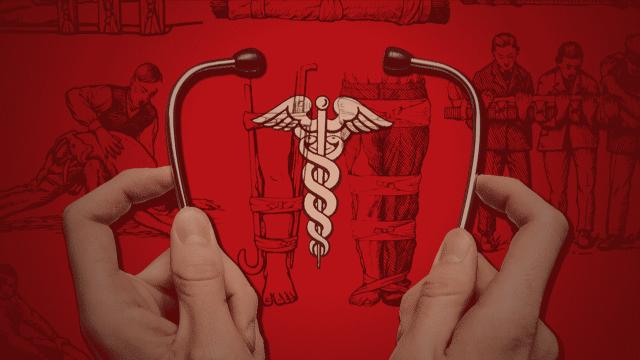
Comments
23 responses to “8 Basic Life-Saving Skills Everyone Should Know”
Good article except for the Heimlich manoeuvre – not only is it less effective than other techniques, it carries the risk of serious harm. There are also serious questions about the lack of evidence base for the technique and some of the ethical practices of the Doctor who invented it (http://www.abc.net.au/radionational/programs/healthreport/the-heimlich-manoeuvre/3053794#transcript)
First Aid organisations in Australia recommend the use of back blows and chest thrusts (check the full procedure here http://www.stjohn.org.au/images/stjohn/information/fact_sheets/FS_choking_adult.pdf), although some American organisations still recommend abdominal thrusts.
The First Aid course I did last year said don’t do the Heimlich maneuver but explained most people do it wrong which is what causes the harm.
To do it right your thumbs should be on the belly button, most people try to do it with their thumbs just under your ribs.
The Heimlich manoeuvre or “abdominal thrust” is no longer recommended for choking as it can cause significant injury
I second this.
I third this.
I ate this.
Aww.. not sure if I 4th or 5th this now. 😛
PIZZA!
American first aid procedures are vastly different to the ones here. And I know the video was dealing with heart attack but don’t start CPR with out checking there airway is clear. In bleeding the apply pressure to artery is a big no no. It it keeps needing more pressure.
Burns they quote 10min then say the BBC recommends 20. How bout the recommend 20 minutes that it is here.
There is a wealth of information for Australianfirst aid why not use it
Compressions should still be started immediately. Most ambulance services in the country have CPGs that have compressions beginning before any time consuming airway management, with defibrillation as soon as possible and then airway management. Most advocate a quick airway check before compressions to remove any obvious obstruction that won’t take very long to get out or quickly lay them on their side to remove fluids.
The logic behind this is fairly simple and is grounded in fairly recent and compelling studies. Whether or not you deal with the airway immediately or not, their heart is not effectively beating or beating at all. Regardless, the patient is quickly depleting the available oxygen in the blood which is now not circulating around the body. Starting compressions earlier reduces the rate of tissue damage, and increases survivability due to their still being some oxygen within the blood and a degree of oxygen still present in the lungs (unless drowned or aspirated). In addition, the earlier a shock is given greatly increases survivability. If you’re fast in setting it all up, you can have a shock in under a minute of arriving. Two minutes between shocks is recommended, more advanced airway management can occur in the breaks.
This sort of approach exists to reduce brain and other tissue damage. This is Ambulance Victoria’s current cardiac arrest flow that they recommend.
http://tinypic.com/r/2w3p1l0/5
Remember this article is about FIRST AID though, that is aimed at aid rendered by laypersons and not HCPs. The general public likely can’t reliably palpate a carotid pulse or recognise inadequate cardiac output, hence why first aid teaches them to recognise apnoea or agonal breathing as a marker for when CPR is indicated. What works for us doesn’t always work for the general public.
If some ones airway is blocked compressions are pointless as no air is getting in or out. And if there is a blockage compressions could force if from their mouth into their lungs.
You even day yourself check airway first halfway through your statement. Though you also say at the begging start compression immediately. So do 2 things at once?
G-man, as a doctor I must ask you to stop giving out such bad advice. Your recommendations are against the best evidence and are incorrect. Compressions are not about moving air in and out if the chest. It is external cardiac massage and employed to increase cardiac output. They still have a role even if the airway is blocked or the patient is not breathing.
Moreover, the passage of a foreign body deeper into the lungs can be a good thing in certain circumstances. If an object blocking the trachea moves down into one of the bronchi, an entire lung that was previously blocked is now open, buying the victim precious minutes/hours.
A little knowledge is a dangerous thing. If you are not an HCP or medical practitioner, do not give out medical advice.
Well I have no medical qualification but held a first aid certificate continuously for 15 years in ACT NSW and currently in Victoria and what your saying is different than what I have been told by several different trainers. So I’m now questioning your qualifications. Dr balls.
Lay people are taught a small fraction of what there is to know about basic life support, g-man. And by the sound of it, you remember or understand even less.
Whether you believe my credentials or not, you are neither a doctor nor an HCP so please refrain from giving out your poorly informed medical advice.
The issue was first aid which is for the “lay person”
Exactly. People who aren’t necessarily going to be able to tell the difference between good advice and what you are saying as you are also a lay person albeit one with a first aid certificate.
Being published after 5pm friday this article would’ve come straight from America, hence the American advice. As always this sort of information should be taken with a grain of salt if the sources are not clearly quoted. And of course nothing beats a proper First Aid course.
‘Indirect pressure’ (i.e. compressing an artery) isn’t really part of lay-person first aid but is still taught as a paramedical skill in many ambulance services. Whether or not it’s really effective is another matter though.
It’s clear, like others have stated, that this is a US article though and they play their own game.
Acetaminophen is not called that in Australia… It is paracetamol. These recommendations are not supported by Australian guidelines (all freely available from Australian first aid providers). The Heimlich manoeuvre is not recommended in Australia as the evidence has moved away from it being effective.
I think that in Australia, first aid for snake/spider bite and/or envenomation by a stinger should also be widely known. Especially for those living remotely or far from the nearest vial of anti-venom. Compression and immobilisation are easy to teach/learn and can buy valuable minutes/hours.
Also I’d like to point out that the earlier advice against applying pressure to an arterial bleed is profoundly BAD advice. The single most important step to control any haemorrhage (in the first-aid setting) is direct pressure. Period.
What about recognising stroke symptoms – or treating snake bites?
F.A.S.T is a good campaign.